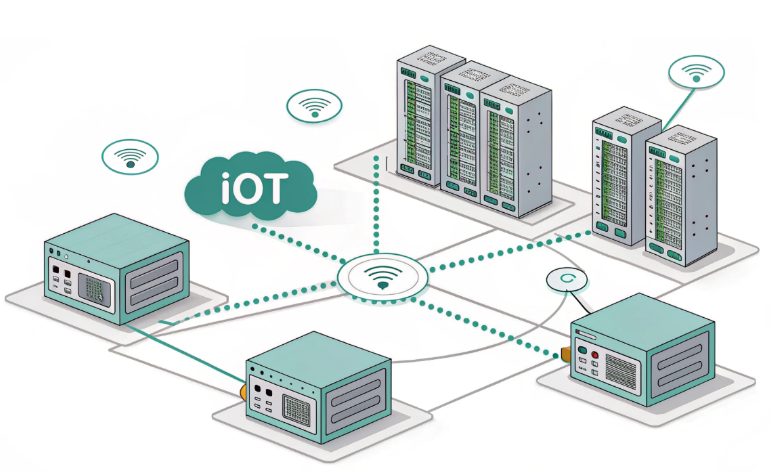IoT Platform Server Cluster Design for Optimal Performance

The rapid expansion of IoT (Internet of Things) platforms has created new challenges in server cluster design. With the exponential growth of connected devices, the demand for highly scalable, reliable, and low-latency server clusters is greater than ever. Leveraging hosting and colocation services in strategic locations, such as Hong Kong, can provide a significant edge in meeting these demands. This article delves into the intricacies of server cluster design for IoT platforms, offering insights into best practices and regional advantages.
Understanding the Unique Demands of IoT Platforms
IoT platforms are fundamentally different from traditional web applications due to their unique data and operational requirements. Successful server cluster design must account for these key factors:
- Massive Data Volumes: IoT devices generate continuous streams of data, often in real-time, requiring robust data ingestion pipelines.
- Low Latency: Many applications, such as smart cities or autonomous systems, require near-instantaneous responses.
- Scalability: The number of devices connected to an IoT platform can grow exponentially, demanding clusters that scale seamlessly.
- Reliability: Downtime can have critical consequences, making high availability a non-negotiable requirement.
- Security: Protecting sensitive data and ensuring secure communication between devices is paramount.
Core Components of Server Cluster Design
Designing a server cluster for an IoT platform involves several critical components that work in tandem to deliver optimal performance:
-
Load Balancing:
Efficient distribution of incoming requests is vital. Load balancers ensure that no single server is overwhelmed, improving both performance and uptime. Hong Kong’s hosting infrastructure, with its high-speed connectivity, enhances load balancing efficiency for regional and global traffic.
-
Distributed Databases:
IoT platforms require databases capable of handling vast amounts of data across multiple nodes. Distributed databases ensure scalability and fault tolerance, often leveraging colocation services in geographically diverse regions like Hong Kong for faster access.
-
Caching Mechanisms:
To reduce latency, caching systems such as in-memory databases can store frequently accessed data closer to end users. This is especially beneficial for IoT platforms requiring real-time responses.
-
Disaster Recovery:
Redundancy and failover systems are crucial. Hosting clusters in diverse locations, including Hong Kong, minimizes the risk of total platform failure during regional outages.
-
Security Measures:
Implementing end-to-end encryption, secure access controls, and robust firewalls ensures data integrity and compliance with global IoT security standards.
Why Hong Kong Hosting is Ideal for IoT Server Clusters
Hong Kong has emerged as a premier location for hosting and colocation services, particularly for IoT platforms. Here’s why:
- Strategic Location: Positioned at the heart of Asia, Hong Kong offers low-latency connectivity to major global markets, making it ideal for the platforms with international reach.
- Robust Infrastructure: Hong Kong’s data centers are equipped with cutting-edge facilities, ensuring high availability and reliability for server clusters.
- Regulatory Advantages: Favorable data privacy laws and compliance frameworks make Hong Kong a secure choice for hosting the platforms.
- Scalability: With abundant hosting and colocation options, businesses can easily scale their IoT infrastructure as needed.
Steps to Implement an IoT Server Cluster
Building and deploying a server cluster for an IoT platform requires a structured approach:
- Define Requirements: Assess the platform’s data ingestion, processing, and storage needs, along with expected growth rates.
- Select an Architecture: Choose between monolithic and microservices-based architectures based on scalability and maintainability requirements.
- Deploy in Strategic Locations: Leverage hosting and colocation services in regions like Hong Kong to optimize global connectivity.
- Implement Redundancy: Design the cluster with failover mechanisms and backup systems to ensure high availability.
- Monitor and Optimize: Use advanced monitoring tools to identify bottlenecks and continuously optimize performance.
Conclusion
Designing a server cluster for an IoT platform requires a deep understanding of its unique demands, from scalability to security. Hosting services in strategic locations, such as Hong Kong, can provide the low latency, high reliability, and robust infrastructure necessary for success. By implementing best practices in cluster architecture, IoT platforms can achieve the performance and flexibility required in today’s competitive landscape.
Whether you’re starting a new IoT project or scaling an existing one, leveraging Hong Kong hosting can help you build a robust server cluster that meets the demands of modern IoT applications.

